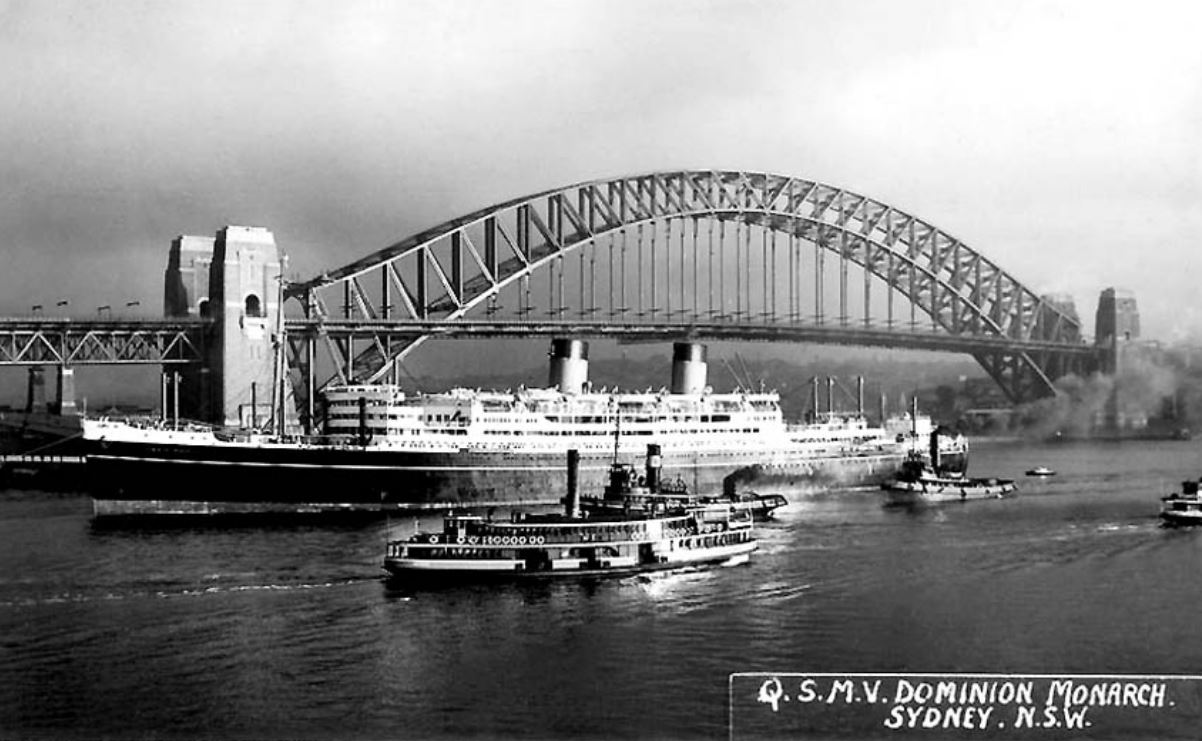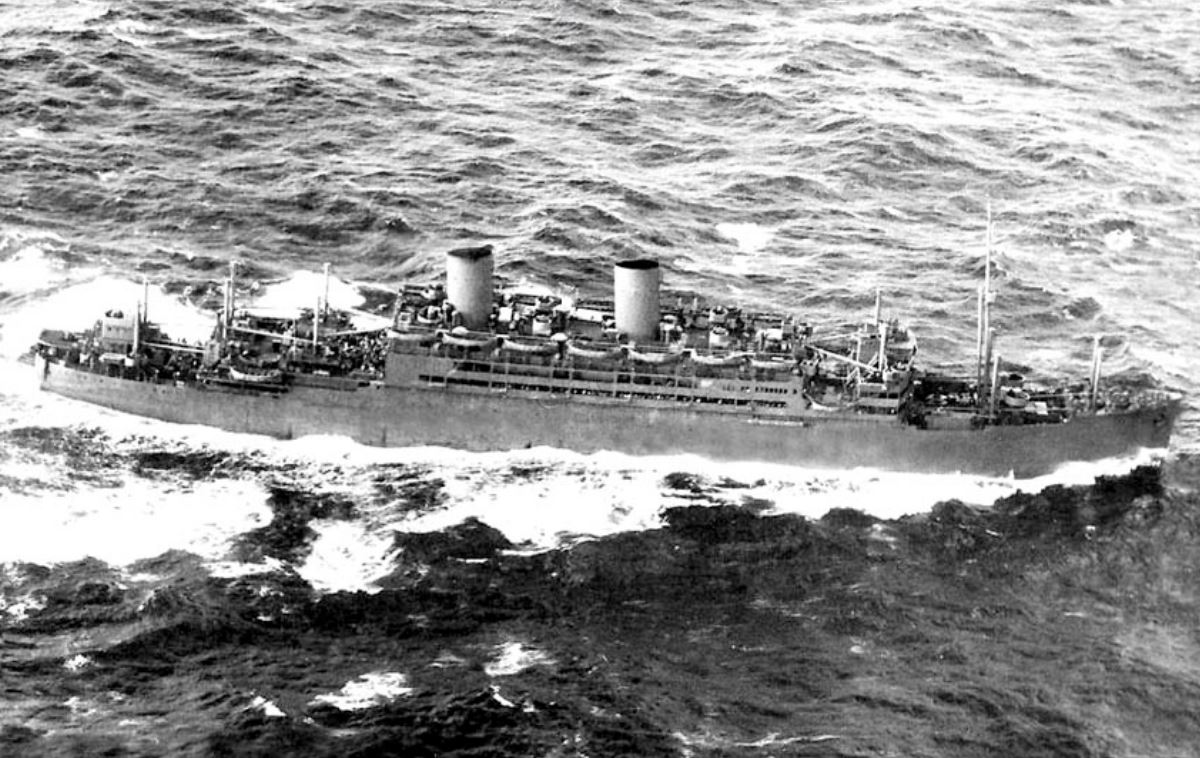HMT Dominion Monarch
From Our Contribution
Contents
Remarks
At the time of her construction, Dominion Monarch was the most powerful motor liner of her kind in the world and certainly the largest ship operating full time on the Australasian trade. Accommodating just 525 passengers, combined with a crew of 385, her passenger/crew ratio offered a superior service. Setting a new record for the “Cape” route, to Melbourne and Sydney, the service was promoted as “The Clipper Route,” with fares commencing at £58 (First Class). During her second voyage, Great Britain and France declared war with Germany. Dominion Monarch was outward bound going through the Australian bight when war broke out.
She was dispatched to Sydney were she was fitted with light armament and she then returned to the UK via the Cape. Upon arrival, Dominion Monarch was laid up, as it was considered that she was far too luxurious to be used as a trooper. She returned to her Australasian service until August 1940, when the British Government requisitioned her, stripping her of her fine fittings and was fitting her out with 3,556 berths. She was painted grey and commenced service as a trooper. In all she carried over 29,000 American and British military personal and brought thousands of wounded soldiers home.
She operated between Europe, and the Middle East and Australia and New Zealand on a regular basis, with her final voyage as a troopship commencing at Melbourne in April 1947. Soon afterwards she sailed north to her builder's Swan Hunter and Wigham Richardson yards where she was completely refurbished. During her 15-month restoration her machinery was stripped out and completely overhauled and her luxurious accommodation was restored to its former glory. The only change was a decrease in accommodation from 525 to 508 passengers.
Her cargo capacity included: 511,000 cubic feet of insulated cargo, including 72,240 cubic feet for chilled cargo. In addition there was 162,000 cubic feet of general cargo space.

